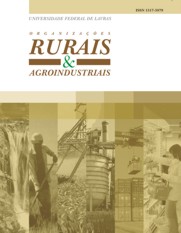The wine market and the reorganization of the geographical indications system in Languedoc region, France
Keywords:
Geographical indications, Wine, MarketAbstract
This paper analyzes a set of institutional changes in the wine market and in the geographical indications system. It is argued that the current context reveals a radical transformation of the market which is not only catalyzed by the repositioning of the main players, but by the emergence of new quality conventions. The emergence of these conventions is a challenger for the precedent institutional framework and defies the hierarchies and classifications that were established over decades. Gradually, the opposition between the New World and the Old World in the wine sector loses its analytical potential. The wine regions are creating composites production styles that combine technological standardization and valorization of particular resources of terroir. At the same time that the New World appropriates of the European concept of geographical indications, the concept is redesigned to fit new principles. From a case study conducted in 2010 in the Languedoc region (Southern of France), we show that, rather than to contrast, the geographical indication systems incorporate some qualitative principles characteristic of the New World of wine.


